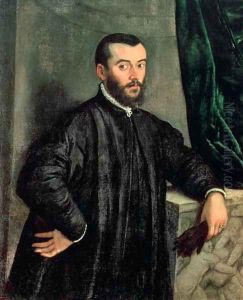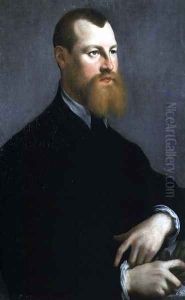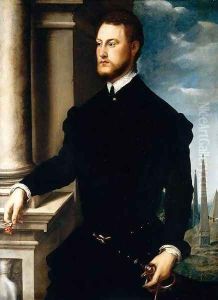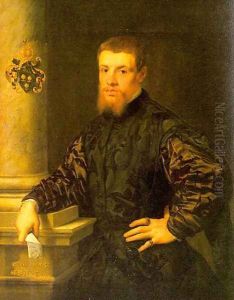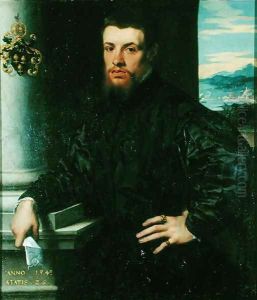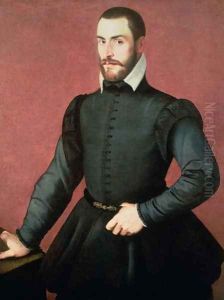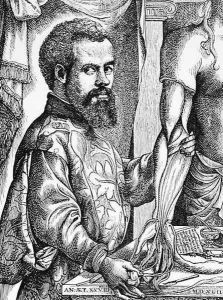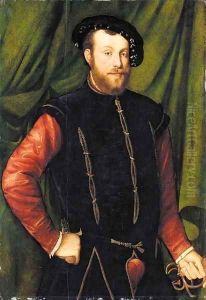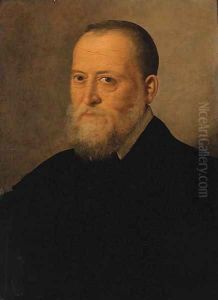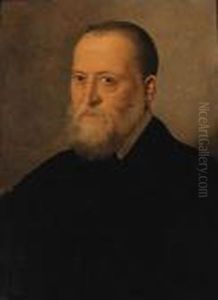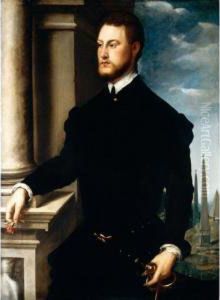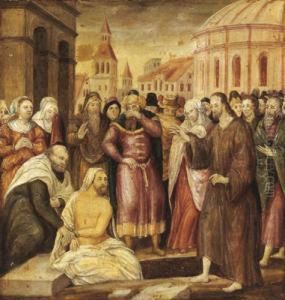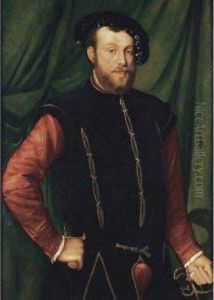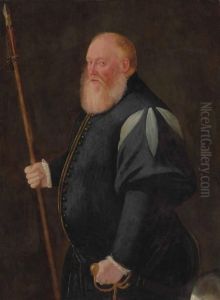Jan Steven van Calcar Paintings
Jan Stephen van Calcar, also known as Giovanni Stephanone or Johann Stephan von Calcar, was a Northern Renaissance painter, likely born around 1499 in Calcar, a town located in the Duchy of Cleves (present-day Germany). Little is known about his early life and training, but it is believed that he traveled to Italy at a young age, where he came under the influence of the Italian Renaissance, particularly the works of Titian, whose style had a profound impact on his artistic development.
Van Calcar is primarily known for his association with the famed anatomist Andreas Vesalius. He is believed to have been commissioned by Vesalius to produce the intricate illustrations for 'De humani corporis fabrica' (On the Fabric of the Human Body), published in 1543. This seminal work on human anatomy featured detailed and accurate anatomical drawings that were groundbreaking at the time. Van Calcar's contributions to this work highlight his skill in combining scientific precision with artistic elegance, making the illustrations both educational and aesthetically pleasing.
Aside from his anatomical illustrations, van Calcar was also a talented portraitist and religious painter. His portraits are noted for their realism and depth of character, showcasing his ability to capture the essence of his subjects. Despite the significant influence of Italian Renaissance on his style, his works also retain characteristics of the Northern Renaissance, such as attention to detail and a keen interest in the natural world.
Van Calcar's exact date of death is uncertain, with estimates ranging between 1546 and 1550. His legacy is somewhat overshadowed by the giants of the Renaissance, but his contributions, especially to the field of medical illustration, remain significant. Through his work with Vesalius, Jan Stephen van Calcar played a crucial role in the evolution of anatomical studies and the intersection of art and science during the Renaissance period.
